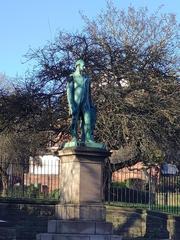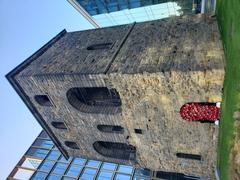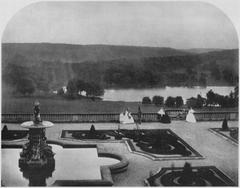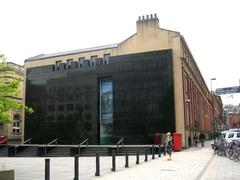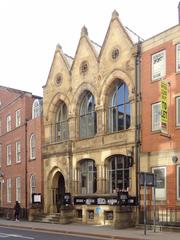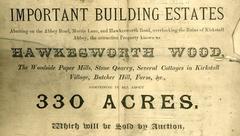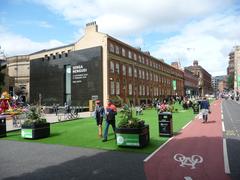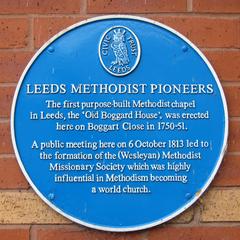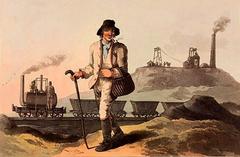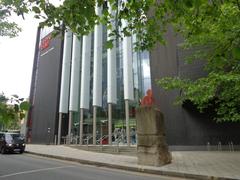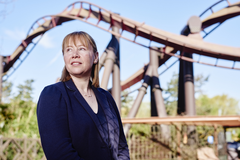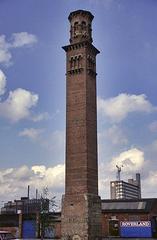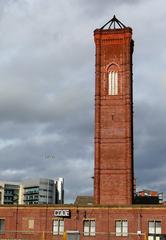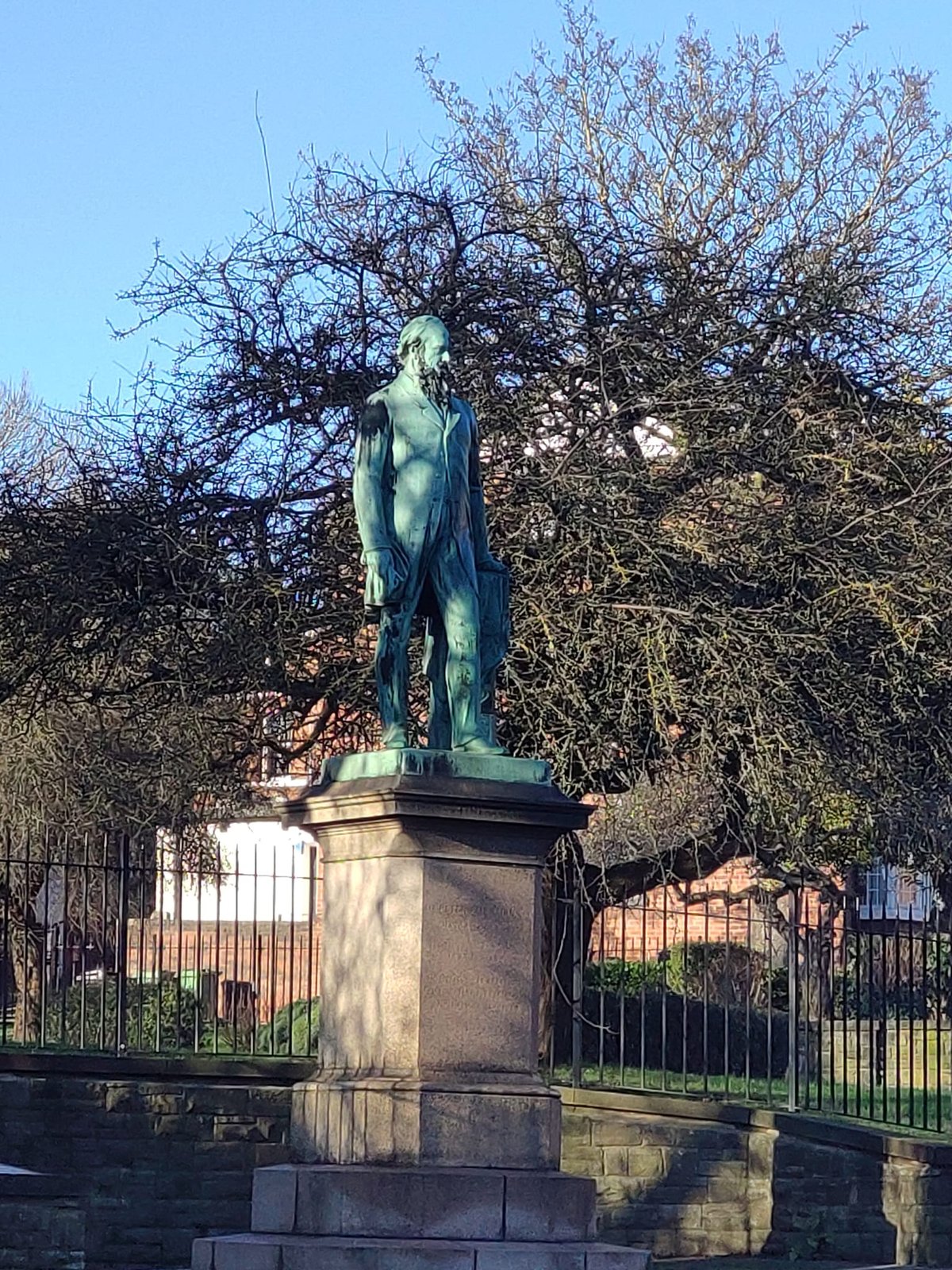
Statue of Sir Peter Fairbairn, Leeds: Visiting Hours, Tickets, and Historical Significance
Date: 14/06/2025
Introduction
The Statue of Sir Peter Fairbairn in Leeds stands as a powerful testament to the city’s industrial heritage and the civic leadership of one of its most influential figures. Set within the tranquil Woodhouse Square, this bronze monument not only honors Fairbairn’s achievements as an engineer, inventor, and mayor but also offers visitors a gateway into Leeds’ pivotal role during the Industrial Revolution (Historic England, The National). This guide provides an in-depth look at the statue’s historical context, artistic features, visitor information, and its enduring role in the cultural and urban landscape of Leeds.
Table of Contents
- The Industrial Revolution and Leeds’ Transformation
- Sir Peter Fairbairn: Life, Leadership, and Legacy
- Artistic Design and Symbolism of the Statue
- Location and Urban Context
- Cultural and Historical Significance
- Visiting Information (Hours, Tickets, Accessibility)
- Practical Tips for Visitors
- Nearby Attractions
- Contemporary Relevance and Public Engagement
- Frequently Asked Questions (FAQ)
- Conclusion and Visitor Resources
The Industrial Revolution and Leeds’ Transformation
During the late 18th and early 19th centuries, Leeds was transformed from a modest market town into an industrial powerhouse. The mechanisation of the textile industry, fueled by steam power and engineering innovation, saw a rapid expansion of mills, foundries, and supporting industries (Discovering Leeds). The city’s fortunes were initially tied to wool and flax, with the latter becoming dominant thanks to the pioneering work of John Marshall and his collaboration with engineers like Matthew Murray.
The demand for advanced machinery led to the emergence of major engineering firms, such as the Wellington Foundry established by Peter Fairbairn in 1826. These companies not only supplied local industry but also exported their innovations across Britain, cementing Leeds’ reputation as a centre of industrial progress.
Sir Peter Fairbairn: Life, Leadership, and Legacy
Born in Kelso, Scotland, in 1799, Sir Peter Fairbairn moved to Leeds in 1826. His Wellington Foundry soon became one of the city’s leading engineering firms, supplying textile machinery that powered Leeds’ economic growth (Historic England). Beyond his industrial achievements, Fairbairn was actively involved in civic life, serving as a councillor, alderman, and mayor (1857–1858). Notably, he was knighted by Queen Victoria during the opening of Leeds Town Hall—a ceremony he helped organize (The National).
His leadership extended to philanthropy and innovation in management, exemplifying the Victorian ideals of public service and entrepreneurial spirit. The respect he commanded is evident in the public subscription that funded his statue following his death in 1861.
Artistic Design and Symbolism of the Statue
Commissioned after Fairbairn’s death and unveiled in 1868, the statue was sculpted by Matthew Noble, a prominent Victorian artist known for his realistic and dignified public monuments (1ajasper1gf1h). Cast in bronze and mounted on a granite plinth, the statue depicts Fairbairn holding a scroll—symbolizing innovation and knowledge—with his left hand resting on a plinth adorned with a cog wheel and the mayoral chain, referencing his engineering prowess and civic role.
The attention to detail in his attire and posture reflects both his status and approachability, aligning with Victorian ideals of leadership. The monument’s inscription reads:
“SIR PETER FAIRBAIRN, KNT/ MAYOR OF LEEDS/ IN/ 1857 AND 1858/ THIS STATUE WAS ERECTED BY/ THE VOLUNTARY SUBSCRIPTIONS/ OF HIS FELLOW TOWNSMEN.”
(Historic England)
Location and Urban Context
The statue stands in Woodhouse Square, a Georgian-era green space northwest of Leeds city centre. The square is notable for its historic terraces and proximity to significant landmarks such as Leeds General Infirmary, the University of Leeds, and Woodsley House—Fairbairn’s former residence (Secret Library Leeds). The placement of the statue here underscores Fairbairn’s importance to the area and integrates the monument into Leeds’ wider civic landscape, which includes other statues honoring figures like Queen Victoria and the Duke of Wellington (GPSmyCity).
Cultural and Historical Significance
The statue embodies the city’s industrial and civic identity, commemorating Fairbairn’s pivotal role in Leeds’ rise as an engineering and textile centre. Its erection by public subscription highlights the collective respect for his contributions, while its continued presence in Woodhouse Square fosters a tangible connection to the city’s Victorian past (Thoresby Society). The site serves as both a focal point for heritage walks and a symbol of the values—innovation, leadership, and community spirit—that defined Leeds’ development.
Visiting Information
Location and Getting There
- Address: Woodhouse Square, Little Woodhouse, Leeds LS3
- By Foot: 10–15 minutes from Leeds city centre and main railway station.
- By Public Transport: Multiple bus routes with stops on Woodhouse Lane and Clarendon Road.
- By Car: Limited street parking; city centre car parks recommended.
Visiting Hours and Tickets
- Open: 24 hours a day, 7 days a week (as a public outdoor space)
- Entry Fee: None; visiting is free
Accessibility
- Wheelchair Access: Paved paths and level ground, though some areas may be uneven due to age.
- Benches: Available for rest throughout the square.
- Guide Dogs: Welcome.
Facilities and Amenities
- Seating: Benches in the square.
- Gardens: Well-maintained central garden area.
- Nearby Toilets: Public toilets in city centre, ~10 minutes’ walk.
- Cafés/Restaurants: Several options within walking distance.
Practical Tips for Visitors
- Best Time to Visit: Daylight hours (8:00 AM–6:00 PM) for safety and optimal viewing; spring and summer for gardens in bloom.
- Photography: Excellent photo opportunities, especially mornings/afternoons. Commercial use may require council permission.
- Respect: Treat the monument and gardens with care; climbing or damaging the statue is prohibited.
- Safety: Standard urban precautions apply, especially at night.
- Interpretation: Informational plaques on-site provide historical context.
Nearby Attractions
Enhance your visit by exploring these nearby sites:
- Leeds Town Hall: Iconic Victorian building, opened by Queen Victoria during Fairbairn’s mayoralty.
- University of Leeds: Historic campus and St George’s Fields.
- Park Square & Queen Square: Other Georgian-era public spaces.
- Leeds Art Gallery & Henry Moore Institute: Significant collections of British art and sculpture.
- Leeds Industrial Museum at Armley Mills: Insight into the city’s industrial history.
Contemporary Relevance and Public Engagement
Public monuments in Leeds, including the Fairbairn statue, have recently been reviewed for their relevance and inclusivity in reflecting the city’s diverse history (Yorkshire Evening Post). While Fairbairn’s statue has not been controversial, the review process encourages ongoing dialogue about the context and interpretation of historical figures in public spaces. The statue remains a valuable educational resource and a focal point for heritage walks, supported by community engagement and preservation efforts (GPSmyCity).
Frequently Asked Questions (FAQ)
Q: Are tickets required to visit the Statue of Sir Peter Fairbairn?
A: No, the statue is in a public square and can be visited free of charge at any time.
Q: Is the site accessible for people with disabilities?
A: Yes, Woodhouse Square has paved, mostly level paths suitable for wheelchairs, though some surfaces may be uneven.
Q: Are guided tours available?
A: Yes, heritage walks and guided tours of Leeds’ historic sites often include Woodhouse Square and the statue. Check with local providers or apps like GPSmyCity.
Q: What is the best time to visit?
A: Spring and summer are ideal, but the statue is accessible year-round. Visit during daylight for the best experience.
Q: Can I take photos at the statue?
A: Yes, personal photography is encouraged. Commercial or group shoots may need permission from Leeds City Council.
Conclusion
The Statue of Sir Peter Fairbairn is a distinguished emblem of Leeds’ industrial and civic legacy, inviting reflection on the city’s remarkable transformation and the leadership that drove it. With free, year-round access in the picturesque Woodhouse Square, the statue is an essential stop for anyone interested in Leeds’ history, public art, or urban heritage. Combine your visit with nearby attractions, enjoy the tranquil gardens, and engage with the living history that continues to shape Leeds today.
Call to Action
Ready to explore more? Download the Audiala app for guided audio tours of Leeds’ historical sites, including the Statue of Sir Peter Fairbairn. For further insights, explore our travel guides and follow us on social media for the latest updates and heritage events.
References and Further Reading
- Historic England – Official Listing Entry for Sir Peter Fairbairn Statue
- The National – Remarkable Fairbairn Brother Deserves Hall of Fame Spot
- Secret Library Leeds – Hidden Nature, Hidden History
- GPSmyCity – Sir Peter Fairbairn Statue Attraction
- Yorkshire Evening Post – Leeds City Council Confirm Major Review of Statues
- 1ajasper1gf1h – Statue Sir Peter Fairbairn Leeds
